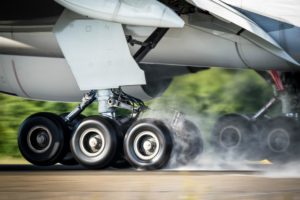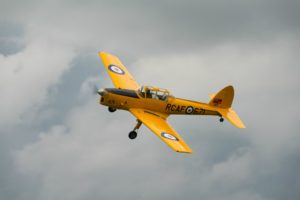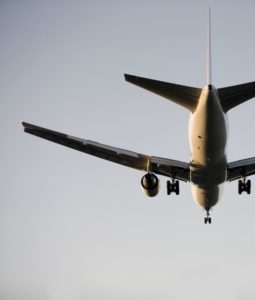Is a gentle landing always desirable?
Captain Lim Khoy Hing explains how pilots handle this important phase of flight.

Source Travel 3Sixty
My first attempt to land a plane happened years ago and involved a Chipmunk – a tailwheel plane, also known as a taildragger. It was at a flying school that operated out of what is now known as Leeds East Airport (RAF Church Fenton) in England. Compared to a plane with a nose wheel in the front, landing a tailwheel aircraft requires a lot of skill – skill that I lacked during my initial training.
To land a tailwheel plane correctly, one has to ensure that the plane sits firmly on the runway, as both the front and tail wheels touch the ground at the same time. There are two rules to remember: firstly, maintain the stick (flight control) in the backwards position to raise the nose, and secondly, keep the aircraft going straight along the runway to prevent the plane from swinging around in what is known as a ‘ground loop’ when it touches down.
Due to the difficulty of landing a tailwheel plane, today, a lot of flying schools have replaced this type of aircraft with nose wheel planes.

Source Travel 3Sixty
Is ‘Soft’ Best?
Pilots often derive satisfaction from executing a gentle landing – especially when their smooth touchdown is greeted with applause from guests. However, technically, a soft landing is not necessarily always desirable. In fact, a firm landing is preferable if the runway is short (this is relative to the size of the aircraft), and especially so when the runway is wet, as a soft landing cannot disperse the water under the wheels fast enough. This can cause the plane to skate on top of the water (hydroplaning). You may have experienced this when driving your car over a pool of water; the water under the wheels can cause the car to skid and potentially, lose traction and directional control.
Sometimes, a pilot will be required to explain to the airline management why a ‘long flare’ (a technique whereby the nose of the aircraft is raised to get more lift so the aircraft stays in the air longer, in an attempt to achieve a soft landing) was recorded on his or her last landing. Such practices are not recommended by some airlines, as it can lead to the bottom of the tail coming into contact with the runway.
That said, as long as the runway length, as well as weather and ground conditions permit it, performing a gentle landing is completely safe.
Cross-wind Landings
Strong winds blowing across a runway can be problematic. In the early days of aviation, planes were small enough and could take off and land into winds in any direction on a grass field. At that time, the other options were to build airports with four runways like a square or three runways like a triangle, which would minimize the effect of crosswinds.
Today, modern airports are designed with long runways in a single direction, usually aligned to the most prevailing winds. However, there are times when the wind changes direction and blows across the runway, requiring a pilot to employ all his or her skills to achieve a good cross wind landing.
Here, the pilot would aim the plane into the wind. The stronger the wind the more the nose would need to be pointed into it. While it may be disconcerting for the passengers on board to note that the nose of the aircraft is not pointing towards the runway, the objective is to avoid being blown off the centre line. This technique – commonly known as ‘crabbing’ since the aircraft moves sideways like a crab – is used by Airbus pilots. Of course, there is a limit to the wind strength when executing this manoeuvre – generally, not more than 40 knots on an Airbus A330.
A Boeing plane, which has a slightly different flying philosophy, would adopt a technique known as side slipping. The pilot would align the nose towards the runway centreline but lower the wings into the wind. To summarise, Airbus aircraft crab in with level wings, whereas Boeing aircraft fly straight into the runway with the wings not level. Ultimately, both will end up touching down on the runway centreline with wings almost level.

Source Travel 3Sixty
Firm for the Win
Landing a commercial jet aircraft smoothly can be a challenge, especially when encountering variables like strong winds, rain or poor visibility. Even the most experienced pilots have occasionally made not so smooth landings. Just remember – a firm is not a bad thing, as the wheels of an aircraft are intended to handle well beyond their design limits.
With that I wish you a safe and firm landing always!
Posted: 20.08.18